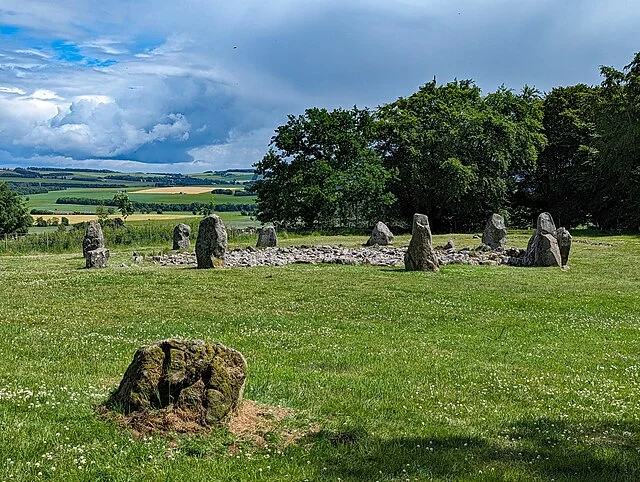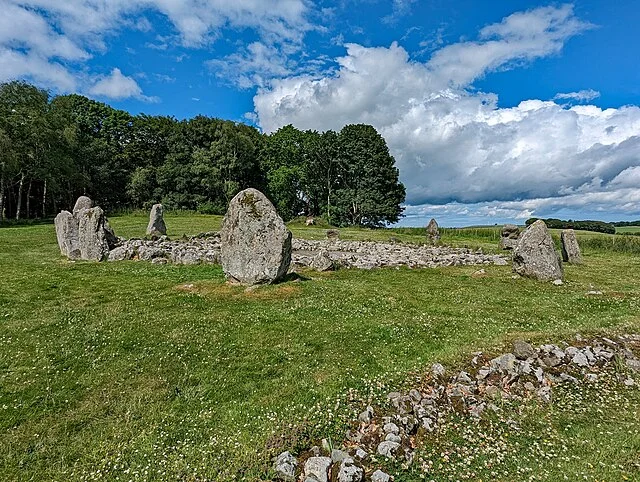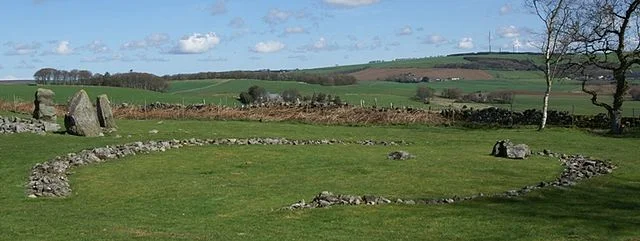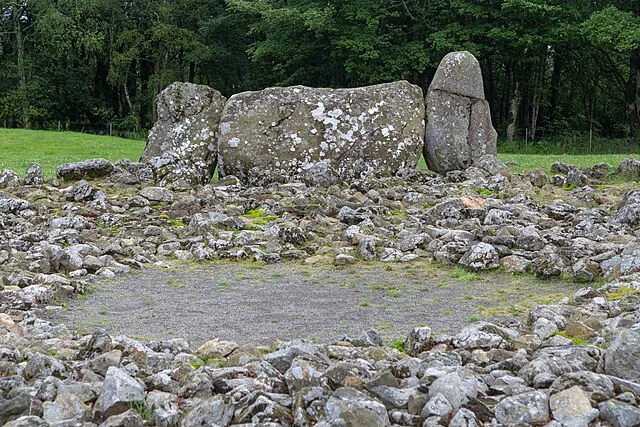Loanhead Stone Circle is an ancient prehistoric monument located near Daviot in Aberdeenshire, Scotland. It dates back to around 2500 BC, during the late Neolithic to early Bronze Age periods. Stone circles were common in Britain during this time, serving as important ceremonial and ritual sites for the communities that built them.
Get your dose of History via Email
Structure of the Loanhead Stone Circle

The stone circle at Loanhead is a recumbent stone circle, a distinctive type found primarily in the northeast of Scotland. The defining feature of this type is the presence of a large horizontal or “recumbent” stone, which lies on its side between two upright stones, called “flankers.” This arrangement is a hallmark of stone circles in the region. The recumbent stone at Loanhead is aligned southwest, a common orientation for these monuments, suggesting a possible connection with lunar or solar events.
The stone circle originally consisted of 11 stones, though some have fallen or been removed over time. The stones form a ring around a central space, which may have been used for ceremonial purposes.
Archaeological Significance

Loanhead Stone Circle is significant for its association with both ceremonial and burial practices. Excavations have revealed a ring cairn inside the stone circle, which is a raised stone mound believed to have been used for burial or cremation. Archaeologists found human remains and pottery fragments, indicating the site had multiple functions, combining ritual and funerary elements.
In 1934, the famous archaeologist Alexander Thom surveyed the site. He suggested that the design of stone circles, including Loanhead, may have been linked to ancient astronomical practices. Some researchers support the idea that the recumbent stone and its alignment were intended to mark significant celestial events, such as solstices or lunar standstills. However, this theory is still debated among scholars.
Preservation and Modern Study

Loanhead Stone Circle has been well-preserved and remains an important archaeological site in Scotland. It has been protected as a Scheduled Ancient Monument, ensuring its conservation. The surrounding area is accessible to the public, allowing visitors to explore this ancient site.
Modern archaeologists continue to study Loanhead and other stone circles to understand the broader cultural and religious practices of the Neolithic and Bronze Age communities in Scotland. Advances in techniques like radiocarbon dating and geophysical surveys have provided new insights into the age and construction of these monuments.
Cultural Context

Stone circles like Loanhead reflect the sophisticated social and religious systems of prehistoric communities. The investment of labor and resources in constructing these monuments indicates that they held significant importance. Loanhead, with its dual role as a ceremonial and burial site, demonstrates the complexity of prehistoric rituals and the ways in which ancient peoples engaged with their environment and the cosmos.
Conclusion
Loanhead Stone Circle is a remarkable example of prehistoric monument building in Scotland. Its recumbent stone, cairn, and alignment suggest it was used for both ceremonial and burial purposes. Continued research at Loanhead helps expand our understanding of the people who built it, their beliefs, and their connection to the natural world. As one of the many stone circles in the region, Loanhead holds an important place in the archaeological and cultural history of Scotland.
Source:

